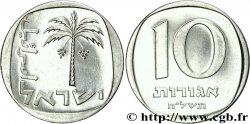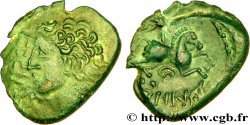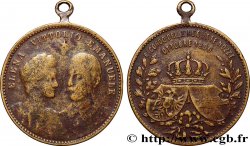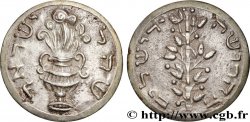fme_972131 - ISRAEL Médaille “Faux Shekel” juif copiant celui de Jérusalem
250.00 €
Cantidad
Añadir a su cesta

Tipo : Médaille “Faux Shekel” juif copiant celui de Jérusalem
Fecha: n.d.
Nombre del taller / ciudad: Israël
Metal: plata
Diámetro: 31,5 mm
Eje de acuñación: 12 h.
Peso: 8,55 g.
Canto: lisse
Cuño: sans poinçon
Comentarios sobre el estado de conservación:
Patine hétérogène. Présence de quelques coups. Métal légèrement poreux
Anverso
Titulatura del anverso: LÉGENDE HÉBRAÏQUE.
Descripción del anverso: Calice au centre de la légende.
Reverso
Titulatura del reverso: LÉGENDE HÉBRAÏQUE.
Descripción del reverso: Motif végétal dérivant de la branche de grenade à trois bourgeons.
Comentario
Cette médaille est à rapprocher du Méreau du pélerinage de Gorlitz aux XV et XVIe siècles.
Les faux shekels ont une histoire longue et mystérieuse. Ils étaient sans doute d'abord fait en Europe et au Proche-Orient dès le Moyen-Âge, vendus aux pèlerins (crédules) de retour ou sur leur chemin vers la Terre Sainte.
Ces objets ont plus tard été utilisés comme "jetons" dans certaines confréries juives, chrétiennes et maçonniques.
http://www.theshekel.org/article_false_shekels.html.
This medal is similar to the Gorlitz Pilgrimage Medal of the 15th and 16th centuries. Fake shekels have a long and mysterious history. They were probably first made in Europe and the Near East as early as the Middle Ages, sold to (gullible) pilgrims returning or on their way to the Holy Land. These objects were later used as \\\"tokens\\\" in certain Jewish, Christian, and Masonic brotherhoods. http://www.theshekel.org/article_false_shekels.html
Les faux shekels ont une histoire longue et mystérieuse. Ils étaient sans doute d'abord fait en Europe et au Proche-Orient dès le Moyen-Âge, vendus aux pèlerins (crédules) de retour ou sur leur chemin vers la Terre Sainte.
Ces objets ont plus tard été utilisés comme "jetons" dans certaines confréries juives, chrétiennes et maçonniques.
http://www.theshekel.org/article_false_shekels.html.
This medal is similar to the Gorlitz Pilgrimage Medal of the 15th and 16th centuries. Fake shekels have a long and mysterious history. They were probably first made in Europe and the Near East as early as the Middle Ages, sold to (gullible) pilgrims returning or on their way to the Holy Land. These objects were later used as \\\"tokens\\\" in certain Jewish, Christian, and Masonic brotherhoods. http://www.theshekel.org/article_false_shekels.html








 Informar de un error
Informar de un error Imprimir la página
Imprimir la página Comparte mi selección
Comparte mi selección Haz una pregunta
Haz una pregunta Consignar / vender
Consignar / vender
 Descriptivo
Descriptivo













